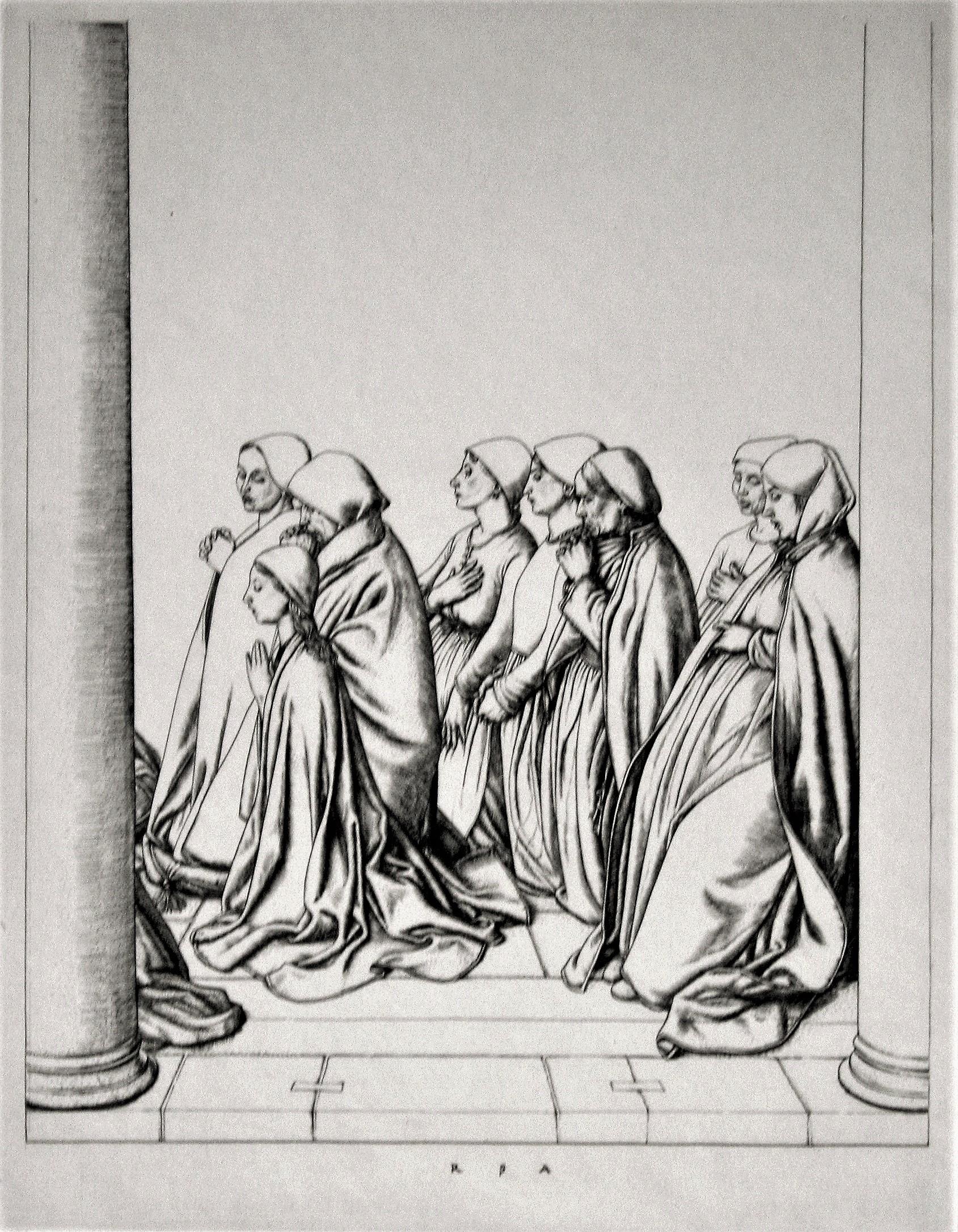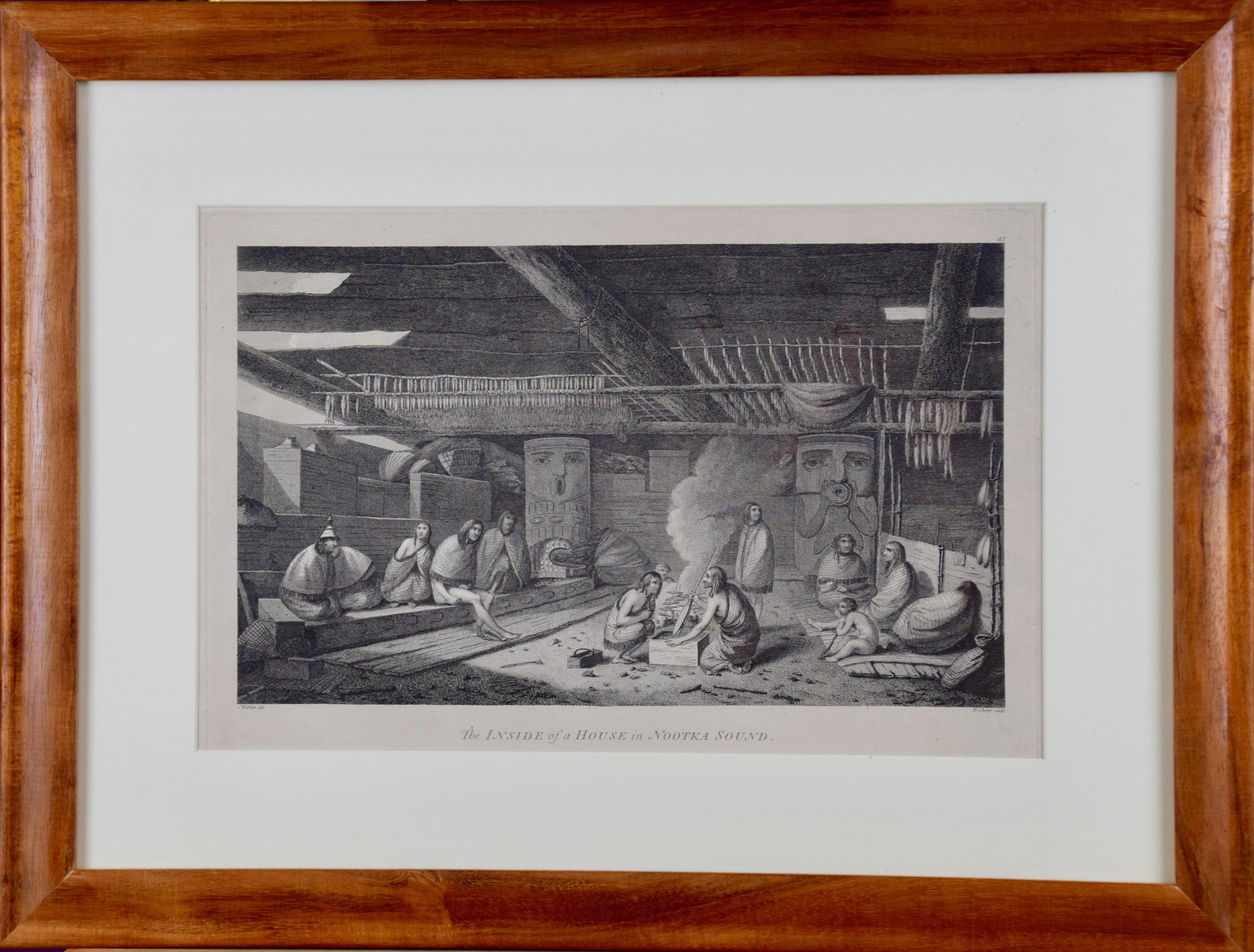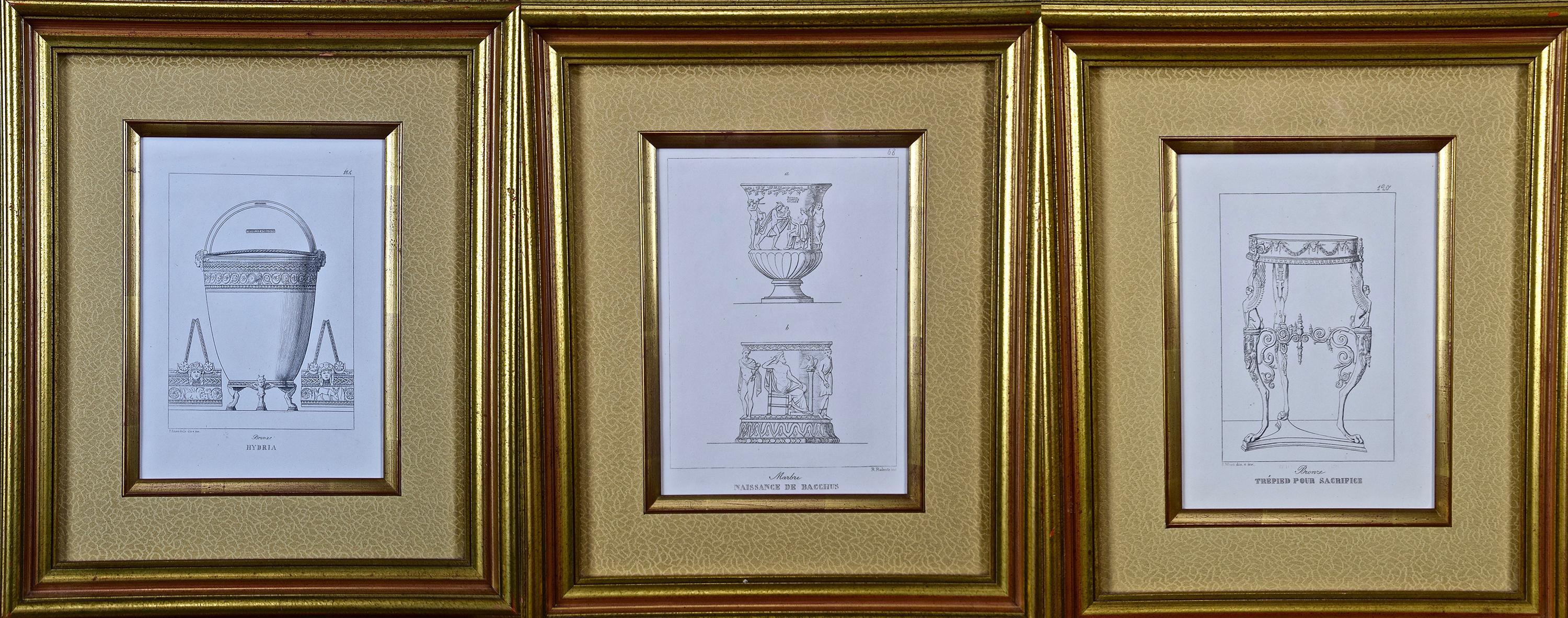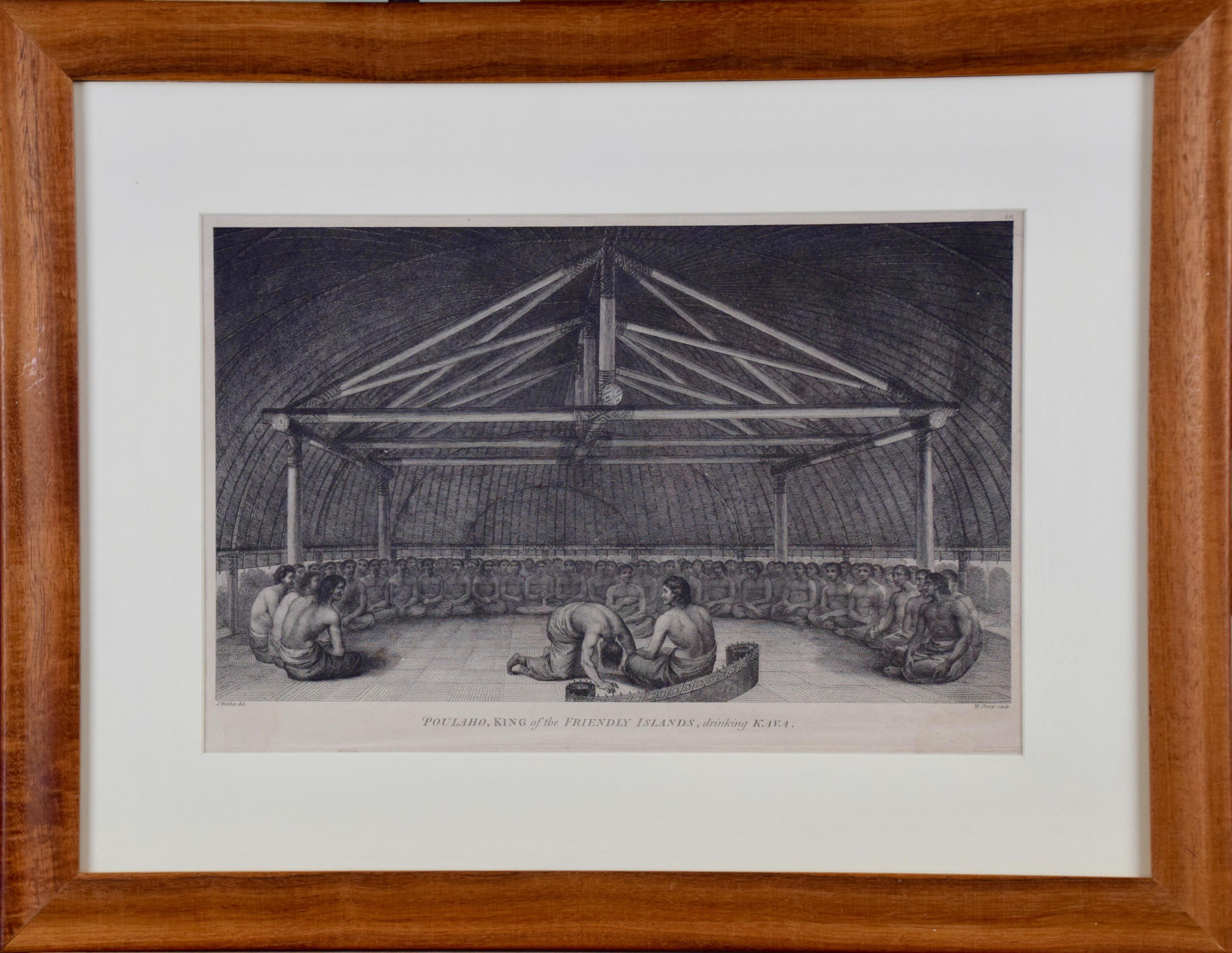Items Similar to Logge di Rafaele nel Vaticano (Raphael's Loggia in the Vatican) Plate X Pilaster
Want more images or videos?
Request additional images or videos from the seller
1 of 14
Gaetano SavorelliLogge di Rafaele nel Vaticano (Raphael's Loggia in the Vatican) Plate X Pilaster1772-1777
1772-1777
About the Item
Artists: Raffaello Sanzio d’Urbino.(1483 – 1520)
Gateano Savorelli, artist. (unk.- 1791)
Ludovico Teseo, draughtsman. (1731-1782)
Pietro Camporesi, architect (1726 - 1781)
Giovanni Ottoviani (1735-1808) & Giovanni Volpato (1735 – 1803), engravers
Title: Delle Logge di Rafaele nel Vaticano, Plate X (10)
Year: 1772-1777
Medium: Hand-colored copperplate engraving
Sight size: 42 x 16 inches.
Framed size: 55.5 x 28.5 inches
Condition: Very good
Frame: Frame in very good condition
A tall and incredibly detailed printed panel, “Delle Logge di Rafaele nel Vaticano” (“Raphael Loggia at the Vatican”), Plate X, by engraver Giovanni Ottaviani, after the art of Gaetano Savorelli and architecture of Pietro Comporesi. The exacting and cleanly rendered black line work is printed on exceptionally fine wove paper, the use of which was still relatively new at the time. It’s skillfully hand-colored with a combination of gouache and watercolor that’s as rich and vibrant as the day it was applied. Attributed and described in Latin across bottom. Top and bottom halves of Plate X have been expertly joined to form a full pilaster. The print is beautifully presented in warm gold wood frame with a wide French mat with eggshell blue main border and an inner gold liner. The print, mat and frame are in very good condition with no condition issues to note.
Raffaello Sanzio da Urbino (1483–1520)—known as Raphael—was commissioned by Pope Leo X in 1518 to decorate his vaulted private loggia in the Palazzo Apostolico (Vatican Palace). Raphael’s resultant tour de force was an astonishing Biblically-inspired, Pompeiian-style fresco masterpiece that remains unmatched to this day. Following renewed interest in the Italian Renaissance during the mid-18th century, Roman painter Gaetano Savorelli (1732–1791), and Pope Clemens XIII architect Pietro Comporesi (1726–1781), were tasked with creating a definitive printed catalog of Raphael’s loggia. After more than two centuries, many of the frescoes had fallen into indecipherable disrepair, allowing Savorelli and Comporesi free reign to reimagine and replace missing elements with inspired, yet simpatico, flights of fancy. Their impressive efforts were made indelible by engravers Giovanni Volpato (1732–1803) and Giovanni Ottaviani (1735–1808), the later of whom’s masterful copperplate engravings are on display here.
- Creator:Gaetano Savorelli (1732 - 1791)
- Creation Year:1772-1777
- Dimensions:Height: 55.5 in (140.97 cm)Width: 28.5 in (72.39 cm)Depth: 1.5 in (3.81 cm)
- Medium:
- Movement & Style:
- Period:1770-1779
- Condition:The print is beautifully presented in warm gold wood frame with a wide French mat with eggshell blue main border and an inner gold liner. The print, mat and frame are in very good condition with no issues to note.
- Gallery Location:San Francisco, CA
- Reference Number:
About the Seller
5.0
Platinum Seller
These expertly vetted sellers are 1stDibs' most experienced sellers and are rated highest by our customers.
Established in 1999
1stDibs seller since 2017
Typical response time: 1 hour
- ShippingRetrieving quote...Ships From: San Francisco, CA
- Return PolicyA return for this item may be initiated within 7 days of delivery.
More From This SellerView All
- ListenLocated in San Francisco, CAThis artwork titled "Listen" 1998 is an original color lithograph on paper by noted American artist David Hollowell, b.1951. It is hand signed and num...Category
Late 20th Century Surrealist Figurative Prints
MaterialsLithograph
- II Cup of JoeLocated in San Francisco, CAThis artwork titled "II Cup of Joe" c.1990, is an original color serigraph by American artist Rickey Jewell Hohimer, 1946-2021. It is hand signed, titled and numbered 250/300 in pencil by the artist. The image size is 19.5 x 23.5 inches, framed size is 26.75 x 30 inches. The artwork is in excellent condition, the frame is slightly damaged at the top, and will be replaced by a new similar black frame when sold. This will bring the over all condition to excellent. About the artist: Although formally trained with a MFA in painting, Rickey Jewell Hohimer has used the styles of Van Gogh and Gaughin to reach for the spontaneity and simplicity of today's folk art. Hohimer creates figures which are not photos of reality; they are romantically stylized to encourage straightforward emotional responses both to the colorful images and to the situations in which they find themselves. Each of Hohimer's paintings lays out a basic story line to which viewers add their own details. "I want the viewer to become personally involved. My paintings offer a change from those which encourage extensive intellectualizing about what the artist is trying to convey. I want viewers to smile -- to enjoy the whimsical nature of what they are experiencing -- to feel it, not to analyze it!. His jazz paintings are stories on canvas of inspired musicians spontaneously making music of the moment. Life in the jazz age is clubs and nightlife beckoning to musicians to produce jazz art...Category
Late 20th Century American Modern Figurative Prints
MaterialsScreen
- Interiors IV: Hotel Paradise CafeBy Peter MiltonLocated in San Francisco, CAArtist: Peter Milton (American, 1930-) Title: Interiors IV: Hotel Paradise Café Year: 1987 Medium: Resist-ground etching and engraving on copper Paper: BFK Rives Image size: 23.5 x ...Category
1980s Realist Interior Prints
MaterialsEtching, Paper
- ToastLocated in San Francisco, CAThis artwork titled "Toast" c.1990, is an original color serigraph by American artist Rickey Jewell Hohimer, 1946-2021. It is hand signed, titled and numbered 98/300 in pencil by the artist. The image size is 23.75 x 9.5 inches, framed size is 30.25 x 16.25 inches. The artwork is in excellent condition, the frame is slightly damaged, and will be replaced by a new similar black frame when sold. This will bring the over all condition to excellent. About the artist: Although formally trained with a MFA in painting, Rickey Jewell Hohimer has used the styles of Van Gogh and Gaughin to reach for the spontaneity and simplicity of today's folk art. Hohimer creates figures which are not photos of reality; they are romantically stylized to encourage straightforward emotional responses both to the colorful images and to the situations in which they find themselves. Each of Hohimer's paintings lays out a basic story line to which viewers add their own details. "I want the viewer to become personally involved. My paintings offer a change from those which encourage extensive intellectualizing about what the artist is trying to convey. I want viewers to smile -- to enjoy the whimsical nature of what they are experiencing -- to feel it, not to analyze it. His jazz paintings are stories on canvas of inspired musicians spontaneously making music of the moment. Life in the jazz age is clubs and nightlife beckoning to musicians to produce jazz art...Category
Late 20th Century American Modern Figurative Prints
MaterialsScreen
- Girls Seated at Desk IXBy Henry MooreLocated in San Francisco, CAArtist: Henry Moore (British, 1898-1986) Title: Girls Seated at Desk IX Year: 1974 Medium: Color lithograph Edition: Numbered 40/50 in pencil Paper: Wove Paper size: 20.25 x...Category
Late 20th Century Modern Figurative Prints
MaterialsLithograph
- Scene Galante au XVIII eme Siecle #1By Antoine CalbetLocated in San Francisco, CAThis artwork titled "Scene Galante au XVIII eme Siecle" c.1930 in an aquatint on paper by French artist Antoine Calbet, 1860-1944. It is hand signed in pencil at the lower right corner. The plate mark (image) size is 9.60 x 12.25 inches, framed size is 16.5 x 19.5 inches. Framed in a wooden gold and black frame, with fabric matting. The artwork is in very good condition, frame and matting are in good condition, frame have some minor dents, matting have a small point of discoloration at upper left. About the artist. Antoine Calbet is the son of Marie Singlande and Jean-Baptiste Calbet, landowner at a place called Gaubert. Trained at the School of Fine Arts in Montpellier by Édouard - Antoine Marsal (1845-1929) where he learned drawing, this illustrator and illustrator, a painter of nudes and gallant scenes, was very popular during his lifetime. Antoine Calbet is then admitted to the School of Fine Arts in Paris in the studio of Alexandre Cabanel (1823-1889). He was a member of the admission jury of the Beaux-Arts from 1913 to 1930. He began to exhibit in 1880 and became a member of the Society of French Artists . He was the friend of his compatriot of Lot-et-Garonne, the President of the Republic Armand Fallières , for which he drew the menus of his meals, which made him known in Parisian salons.He illustrated works by Jean Lorrain , Henri de Regnier , Pierre Loues 3 and for periodicals like L'Illustration . Selected museums and collections Dallas , Dallas Museum of Art : Back woman...Category
Mid-20th Century Realist Figurative Prints
MaterialsAquatint
You May Also Like
- Women at PrayerBy Robert Sargent Austin, R.A., P.R.E., P.R.W.S.Located in Storrs, CT10 15/16 x 8 7/16 (sheet 13 13/16 x 10 13/16). Subsequent to Dodgson. Edition 40 published by the Twenty-One Gallery for 7 guineas. Illustrated: Fine Prints of the Year, 1936. A rich...Category
1930s Renaissance Figurative Prints
MaterialsEngraving
- Print Porcelain Plaque Last Supper Painting after Leonardo in Carved Wood FrameLocated in Firenze, ITA lovely early 20th century printed porcelain miniature of The last supper painting after Leonardo Da Vinci in Italian Cenacolo. This Swiss Fr...Category
Early 20th Century Renaissance Figurative Prints
MaterialsPorcelain, Color
- "Inside of a House in Nootka Sound" (Canada) from Captain Cook's 3rd VoyageBy John WebberLocated in Alamo, CA"The Inside of a House in Nootka Sound" is an engraving created by William Sharp (1749-1824), from a drawing by John Webber (1752-1793), who was the artist on Captain James Cook's 3rd and final voyage of discovery. It is Plate 65 in "A Voyage to the Pacific Ocean Undertaken by the Command of His Majesty, for Making Discoveries in the Northern Hemisphere", the official British Admirality sanctioned journal published upon completion of the voyage in London in 1784 by Strahan & Cadell. This engraving is presented in a Koa wood frame and a white mat. There are occasional tiny faint spots, but the print is otherwise in very good condition. Koa wood is legendary in Hawaii. Not only is this amazing wood native to Hawaii, but it is known for the deep rich colors and varied grain pattern. Koa has an honored heritage in Hawaii and is highly revered and sacred. The word “koa” means “warrior” in Hawaiian. The warriors of King Kamehameha the Great, created canoes and weapons from a wood plentiful on the Big Island of Hawaii. This wood became synonymous with the warriors themselves, and it became known as koa. There are three other engravings listed form the official journal of Captain Cook's 3rd voyage available that are presented in identical Koa wood frames and mats. They would make a wonderful grouping for a display of 2, 3 or 4 prints. Please see listings: LU117324682432, LU117324684022, LU117324684062. A discount is available for a grouping depending on the number of items included. Nootka Sound is on the west coast of Vancouver Island, British Columbia, Canada. It was explored by Captain Cook in 1778 after he discovered Hawaii during his 3rd voyage. He originally named it King George's Sound, but did record Nootka Sound, which he thought was its native name. Hawaii was originally called The Sandwich Islands in honor of The Earl of...Category
1780s Realist Interior Prints
MaterialsEngraving
- Three 19th C. Engravings of Classical Italian Bronze Architectural ElementsLocated in Alamo, CAA grouping of three engravings depicting classical Italian architectural features held in the National Museum of Naples, entitled "Bronze Hydria", "Marbre Naissance de Bacchus" and "...Category
1880s Other Art Style Still-life Prints
MaterialsEngraving
- "King of the Friendly Islands" (Tonga); Engraving from Captain Cook's 3rd VoyageBy John WebberLocated in Alamo, CA"Poulaho, King of the Friendly Islands, Drinking Kava" is an engraving created by William Sharp (1749-1824), from a drawing by John Webber (1752-1793), who was the artist on Captain James Cook's 3rd and final voyage of discovery. It was published in the atlas of "A Voyage to the Pacific Ocean Undertaken by the Command of His Majesty, for Making Discoveries in the Northern Hemisphere", the official British Admirality sanctioned journal published upon completion of the voyage in London in 1784 by Strahan & Cadell. Captain Cook visited Tonga on his 3rd voyage, which he named The Friendly Islands because of the warm welcome he and his crew received, unlike some of the other more hostile Pacific islands. The engraving depicts Cook and his men observed a kava ceremony at the village of Mu’a on Tongatapu. King Paulaho sits in the centre foreground, his back to the spectator with a man kneeling before him. The ceremonial mat depicted behind Paulaho indicates that nobody was allowed to sit behind him. The figure in the centre holds a single cup, referring to the Tongan custom of offering the cup to the king first. Kava is native to the islands of the South Pacific and was first described for English readers in 1768 by Captain James Cook. The kava root has been used for centuries as a central feature of ceremonies and celebrations because it was able to bring about a calming and pleasant social atmosphere. The root was crushed and processed into coconut milk to become the focal ceremonial beverage, simply referred to as kava. This engraving is presented in a Koa wood frame and a white mat. Koa wood is legendary in Hawaii. There are occasional faint spots, but the print is otherwise in very good condition. This amazing Koa wood is native to Hawaii and it is known for the deep rich colors and varied grain pattern. Koa has an honored heritage in Hawaii and is highly revered and sacred. The word “koa” means “warrior” in Hawaiian. The warriors of King Kamehameha the Great, created canoes and weapons from a wood plentiful on the Big Island of Hawaii. This wood became synonymous with the warriors themselves, and it became known as koa. There are three other engravings listed from the official journal of Captain Cook's 3rd voyage available that are presented in identical Koa wood frames and mats (LU117324682422, LU117324684052, LU117324684032). They would make a wonderful grouping for a display of 2, 3 or 4 prints. A discount is available for a grouping depending on the number of items included. Captain Cook is remembered as one of the greatest explorers and navigators in history. His explorations included Australia, New Zealand and islands of the South Pacific and the northwest coast of North America. Hawaii was discovered by Captain Cook during this voyage. Hawaii was originally called The Sandwich Islands in honor of The Earl of Sandwich...Category
1780s Realist Figurative Prints
MaterialsEngraving
- Four 19th Century Hand Colored Engravings Depicting English Royal ResidencesBy Charles WildLocated in Alamo, CAFour hand colored etchings and aquatints depicting interiors within English royal residences, including "The Blue Velvet Room at Carlton House", "The Queen's Library at Frogmore", "T...Category
1810s Academic Interior Prints
MaterialsEngraving
Recently Viewed
View AllMore Ways To Browse
Decorated Interiors
Antique Interior Decorating
18th Century Roman
The Vatican
Raphael The Artist
Italian Renaissance Style Art
Raphael And The Antique
Antique Plate Warmer
Antique Warming Plates
Plate Warmer Antique
Antique Warming Plate
Copperplate Engraving
French Interior Engraving
Renaissance Fresco
Biblical Engravings
Framed Architectural Engravings
Italian Pilaster
Raphael Engraving





